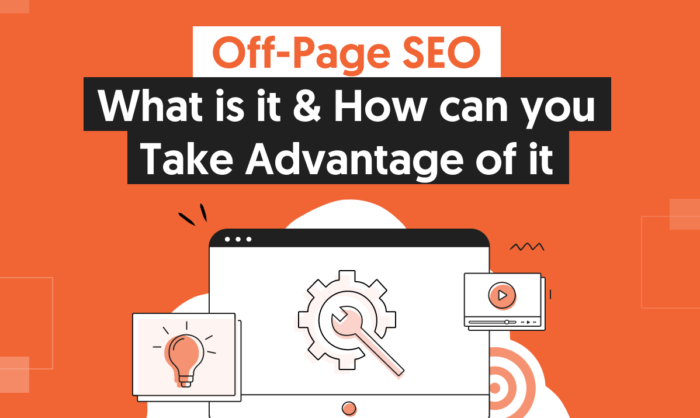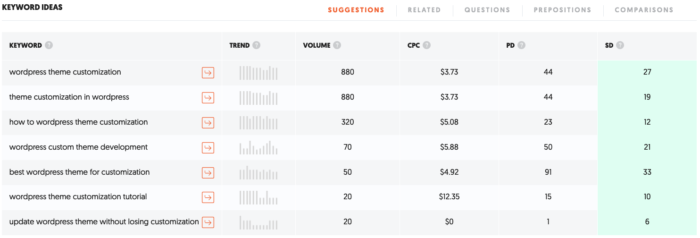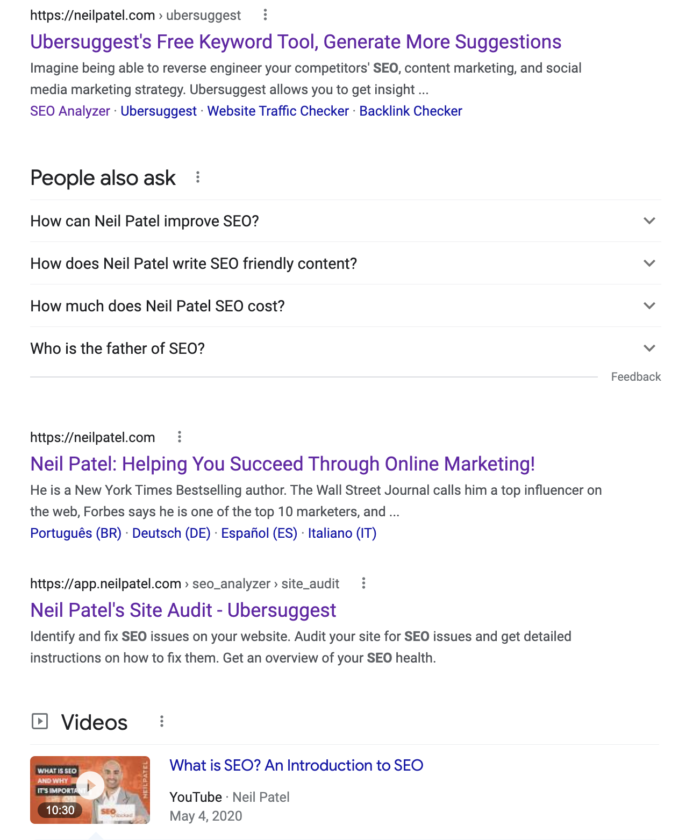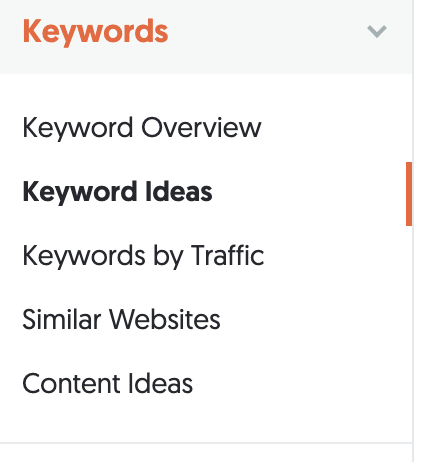What Is It & How Can You Take Advantage of It

Table of Contents

As smart bloggers and content marketers, we usually start with on-page SEO.
However, one of the most important Google ranking factors isn’t found on your page at all. Rather, it’s backlinks from other websites pointing towards your site. The top results on Google have an average of 3.8x more backlinks than the results that appear in positions 2-10.
Off-page search engine optimization is not just about building backlinks though.
It goes deeper than that. For example, brand mentions (your site URL or brand name mentioned on another site without a hyperlink) are an integral aspect of off-page search signals.
Off-page SEO simply tells Google what others think about your site. For example, if you’ve got a lot of valuable links pointing to your pages, search engines will assume that you’ve got great content that provides value for users.
People only cite, reference, and share content they like. Even in a brick-and-mortar business, if your product is helpful and affordable, you’ll get a lot of word-of-mouth referrals from your current customers.
If you’re ready, I’m going to walk you through everything you need to know about off-page search optimization.
What is Off-Page SEO?
“Off-Page SEO” refers to all of the activities that you and others do away from your website to raise the ranking of a page with search engines.
Though many people associate off-page SEO with link building, it goes beyond that. Many activities that don’t result in a standard link on other sites are important for off-page optimization.
On-page search engine optimization happens within the site, while off-page SEO happens outside the site. If you write a guest post for another blog or leave a comment, you’re doing off-page site promotion.

Preparing a Site/Page for Link Building
Links are still very important to Google. In fact, it’s almost impossible for Google to determine the value of any web page if there are no links pointing to it, no matter how useful, fresh, or in-depth the page content might be.
Site owners are often tempted to skip initial preparations for link building. But it’s important that you give this top priority because preparing a site will ensure that you’re mindful of the links you sent to them.
So how do you ensure that your web pages are ready for link building?
1. Lay Out Your Internal Pages
Optimized internal pages can make a huge difference in your overall rankings. This includes interlinking your pages using random keywords (with more emphasis on your brand name).
According to Brian Dean’s famous post “Google’s 200 Ranking Factors,” the number of internal links to a page indicates its importance relative to other pages on the site.
Be careful when you do this, however. In a recent study, Semrush found 42.5 percent of websites have broken internal links.
To optimize internal linking, you should have silo pages that connect to your category pages and supporting pages (posts). That way, when you send a link to the homepage, the juice flows through your category and supporting pages, thus boosting your search performance.

Smart search engine optimization professionals don’t just throw links at a page. Instead, they lay out the pages so that each link will pass SEO juice to other interconnected pages.
None of your internal pages should stand alone. Make each page an integral part of your site and include seamless navigation. This is essential to your site users and your appeal to search engines.
Ideally, pages addressing the same or related topics should be linked together in order to provide a rich experience for the users.

In search engine optimization, internal pages are often overlooked. Most SEOs and site owners don’t realize that much of a site’s “SEO value” flows from how the internal pages are structured.
This is usually made possible when you have links from high-value pages on the same site. Silo your pages properly if you want healthy link equity between your internal pages.
Remember that it’s no longer only about the number of links you have. The quality of links to your internal pages is as important as the structure of the pages themselves.
In fact, sometimes reducing the number of links pointing to your internal pages could help your SEO efforts.
For example, CMS North America, a manufacturer of 5 axis CNC machines, had an established website with 170 indexed pages. Yet, the site wasn’t generating substantial search traffic.

By auditing their site using the Internal Link Juice Tool, they discovered that the site had 168 links pointing to the homepage.
This was more than best practices called for, which is especially a problem when the SEO juice from those links doesn’t flow to internal pages.
They initiated a new navigation structure and removed some of the links pointing to silo pages, while retaining the links that supported usability (such as “contact us” and support pages). In all, 70 links were removed.
After 6 weeks of re-structuring the internal pages’ links and the homepage, most of the fresh pages and links had been re-crawled by Google’s spider.
The company saw improved rankings for 18 of the 21 keyword phrases the site was targeting. Keywords that were already ranking on page 2 improved an average of 3.7 ranking slots.
2. Do Basic On-page SEO First
On-page search engine optimization is important. After all, you don’t want Google to view your site as a neglected portal.
I’m sure you’ve heard enough about meta tags and keyword density. Yet, there are other important on-page SEO factors that matter and that are often overlooked. This on-page SEO infographic from Backlinko lays many of them out for you:

One of the reasons many authority sites no longer dominate the top organic listings is because they’ve neglected basic on-page SEO.
You want to link to your internal pages using the keyword that best defines that page.
When you create a landing page that you would like Google to rank highly, you should pass more SEO juice to that page from your important pages.
If the search engine giant is seeing a lot of pages on your site for a particular search term and is unsure of which one to rank higher than the others, you’ll struggle to increase your search engine rank no matter how much value you provide.
And that’s what the basic on-page search engine optimization process is all about. There’s no magic secret formula. Just ensure that your pages are well structured, your keywords specified, and signals are being sent to Google in the right manner. This will work towards improving your search engine ranking.
Here’s an example: Daily Mail Online, a popular online magazine that ranks highly for several keywords, failed to dominate the top listings during the 2014 World Cup. Other brands took their spots:

The online magazine missed out on this opportunity to attract thousands, if not millions of search users, given the sheer interest in the tournament (with a spike peak around June 18).

With several brands dominating Google’s first page rankings, Daily Mail Online missed out on the term “World Cup.” Each new article published about the World Cup overlapped with Daily Mail’s landing page, which they desperately wanted to rank better than other pages (shown in pink).

What’s happening here is the search engine giant is seeing lots of pages from Daily Mail Online for this search term, and is unsure of which one should be ranked highest.
This has a lot to do with internal page linking—or the lack thereof.
To capitalize on the trending search term at the time, Mail Online could have linked back to the hub page from every internal page (especially those related to ‘Word Cup’).
This would have been a strong signal to Google that this page was significant and perhaps useful to users.
Sadly, Daily Mail had lots of opportunities to link back to the hub from relevant blog posts and pages, but they didn’t do so.
3. Pick Thematic Keywords, Even for Off-page SEO
Although links are still the icing on the cake, the upshot to SEO that controls every other factor is the keywords you choose.
Keywords are the fundamental building blocks for your content campaign. In the diagram below, the more accurate view of on-page SEO shows that use of related keywords and primary keywords account for 7.5% and 40% of on-page SEO, respectively.

But not all keywords are created equal. If you want to improve the odds of driving organic traffic to your site, then you need to pick thematic keywords.
The word “thematic” simply means having or relating to a particular subject.
So when you’re picking keywords, focus on those that are related to a particular subject. You can’t afford to spread your net too wide. Here’s an example:
Let’s assume that your business delivers WordPress theme customization services. It’s important to find the right related keywords that you can create content around.
Simply plug your main keyword (WordPress theme customization) into the Ubersuggest search bar. Click the “Search” button. Simply plug your main keyword (WordPress theme customization) into the Ubersuggest search bar. Click the “Search” button. Here are thematic keyword phrases that populate in the results:

Remember that you’re in business to help others. By knowing the words, phrases, and search terms they use in search, you can more easily tailor your content to meet their needs.
You can supercharge the power of your keywords by switching toward branded keywords. In other words, instead of targeting “SEO tips,” you could niche down and include your brand or domain name (e.g., Moz SEO tips, Neil Patel SEO).
Domain or brand-oriented keywords usually bring up several results from the same site in Google search results.

Of course, you have to create useful, high-quality content. When you see several of your pages ranking in Google search results, it doesn’t matter what positions those pages hold – you can pass more link juice to them through any of the link building strategies below:

Branded thematic keywords will give you an edge over the competition and serves as a leading SEO technique. No matter how many top brands are dominating the top 10 organic listings, you can find yourself driving motivated visitors to your site.
When you’re targeting keywords in on-page optimization, don’t just keep reiterating those primary keywords over and over.
Instead, use synonyms or latent semantic indexing (LSI) terms. LSI keywords have one purpose – to help search engine spiders extract meaning from normal keywords (especially those with more than one meaning). For example, Apple, the computer company vs. apple, the fruit.
Ideally, if you were writing content on a subject related to Apple, the company, Google expects you to mention relevant words and terms that are common to the organization.

Stay away from mentioning your primary keyword (e.g., cheap airline tickets) over and over in your content. Google will view that as over-optimization and may well penalize you.
You might be wondering how you can find these synonymous words. The good news is that there are several tools that you can use to research LSI search terms. Simply follow these steps:
Step #1: Go to Ubersuggest and input your primary keyword (e.g., cheap airline tickets). Click the “Search” button.
Step #2: Click “Keyword Ideas” in the left sidebar.

Step #3: Review the Keyword Ideas

Step #4: Choose Keywords
Choose keyword phrases with high search volume, a low SEO difficulty score, and high CPC.
The final step is getting a better idea of what you need to do to outrank your page one competitors.
In summary:
On-page keyword optimization all boils down to researching, choosing, and integrating keywords that you can easily rank for. You don’t want to compete with top brands with higher and stronger domain authority.
That’s why you should also focus on long-tail keywords. You already know how to find and use them to improve your search rankings.
How to Get Relevant, Authority, and User-Friendly Backlinks
In January of 2022, Google processed 12.1 million search queries. Think of all the potential traffic your website could receive if you could capture just a tiny fraction of those searches. How?
As SEOs, content marketers, and bloggers know, backlinks are currently the most important off-page SEO factor.
That’s because natural links from authoritative and relevant websites act as an independent “vote of confidence,” which helps search engines trust your website more.

When Google’s search spider crawls your site, looking for fresh content (sometimes depending on your sitemap settings), it indexes your new pages and prepares them for search users.
After your pages are added into its vast index to be returned in search results when relevant search queries are triggered, Google uses several algorithm factors to determine where those pages will rank.
In the SEO world, we refer to these as Google’s ranking factors. They’re the determining factors for organic web page rankings. Fortunately, you don’t have to memorize all of the ranking factors. This is great news since there are literally hundreds of them.
But the most important factor as far as SEO is concerned is links. Well, not the links per se, but the impact of such links. Some other off-page factors are:

In the past, if I generated 100 links to my page, and you had only 20 links, Google would view my web page as more authoritative and valuable than yours.
Link quality wasn’t all that important at the time.
But today, links are perceived differently. A lot of questions arise when Google sees a link pointing to your web page. For example:
- Where does the link come from?
- What prompted the site owner to link to you?
- What is the link quality? (I.e., is it from an authority site?)
- How fresh is your link?
- How natural is your link profile?
- And so on…
When building links to your site or internal pages (which is more ideal in today’s SEO), focus on relevant, authority, and SEO-friendly links.
Ways to Get Valuable Links to Improve Off-page SEO
There are a variety of approaches when it comes to getting backlinks. Here are some of the most common and effective.
1. Broken Link Building
Even though I’ve written tons of posts on broken link building, sadly, not many people do it. Per Semrush, 40.5 percent of websites contain broken links, and you can leverage that by asking websites with broken links to replace the links with valid ones to your site.
Broken link building is easy, faster than guest blogging, and could provide a substantial avenue to earn the right links.
When I launched my nutrition blog, I leveraged broken link building tactics and generated a handful of natural links from trusted sites through that strategy.
The opportunities are just endless when you capitalize on dead links. Because in reality, the internet is broken…literally.
Lots of links that you see on authority blogs are actually dead. As hosting expires, sites are messed up during file transfer or migration or typing mistakes happen and links are bound to break. They lead to 404 error pages, which don’t appeal to users (more on this later).
All these broken links are to your advantage.
There is nothing new or fancy about fixing broken links. This link building tactic will never become outdated or fizzle out, because the internet will always have new broken links that need to be fixed.
If you have too many dead links on your blog, and are wondering whether your search performance will be affected, you don’t have to worry. According to the Official Google Webmaster Central blog, and confirmed by Semrush in 2021, 404 error pages or broken pages won’t affect your site’s ranking.
404s are a perfectly normal part of the web; the Internet is always changing, new content is born, old content dies, and when it dies it (ideally) returns a 404 HTTP response code. Search engines are aware of this; we have 404 errors on our own sites, as you can see above, and we find them all over the web. In fact, we actually prefer that, when you get rid of a page on your site, you make sure that it returns a proper 404 or 410 response code (rather than a “soft 404”).
Although Google likes to see a proper 404 error page, do you think it’s a good experience for the user? Absolutely not.
When people click on your web page from an organic results page, they’re not expecting to see a 404 error page, but rather want to see the exact content they searched for.

Imagine how frustrated people will be when they searched for “best digital wrist watch,” only to click on the first result and see an error page.
A few of these searchers will likely mark the site address and vow never to visit again. Obviously, the user experience was poor. And there’s nothing that drives people away more than a poor user experience, which is a natural indication of your overall customer service to the searcher.
The result of this can be disastrous. According to Sacramento Design Network, “85% of your business could be lost due to poor customer service.”

In a nutshell, broken link building breaks down to four simple steps: conduct a backlink analysis on a relevant website, find a broken link, contact the owner, and let them know about their dead links.

Since you’re helping the site owner locate non-functional links, they might do you the favor of including a link to your website. Ideally, offer a replacement link when appropriate.
If I linked to a particular web page from my Neil Patel blog and found the links to be dead, I could easily replace it with another relevant and high-value resource. If that high-value page belongs to you, that’s both SEO juice and a valuable link.
Trust me, you can get it right the first time, and build the right links to your web pages using this tactic. You’ll find these resources really helpful:
Create and Distribute Compelling Infographics
There’s no doubt about it: infographics still work and will likely continue to work in the future.
As of 2020, infographics were the fourth most commonly produced form of content marketing media.
While infographics can still yield impressive results, you have to understand that not all infographics will get the job done.
You’ll most likely agree that my infographics are top-notch. In fact, I spend up to $1,000 to have a single infographic designed.
However, if you’re on a tight budget or just starting out, you may not be able to afford $1000 infographics.
Luckily, you can use sites like Dribbble to find professional infographic designers for half the price. If you decide to use Visual.ly, you’ll get a better design – but their service costs more.

A lot of content marketers use infographics to attract the right audience, acquire authority links, and grow their email list.
For instance, Ken Lyons shared a WordStream case study in which they created a useful infographic that helped a lot of people. Interestingly, the infographic earned a link from CNN and drove loads of traffic to its site.
Ann Smarty, a prolific content marketer, created a useful infographic that generated 10 powerful links in just 2 days.
Whether you’re a B2B or B2C company, you can use visual marketing to drive engagement with your target audience and earn editorial links from the right sites.
I love creating and distributing compelling infographics. Like any compelling content, when you give it sufficient initial promotion, an infographic has a greater chance of going viral.
The good news is that you’ll continually generate organic traffic to your blog when people start to share your infographics.
In my experience, I’ve found that infographics generate 37.5% more backlinks than a typical blog post. This makes creating infographics an irresistible link building tactic that you should definitely try.
If you’re ready to create and distribute infographics to improve your off-page SEO efforts, the resources below will be helpful:
Of course, there are other ways to build quality links to your web pages. For example, you can leverage blogger outreach to build relationships that will yield better links, and use social media outreach to claim unlinked brand names from relevant blogs.
How to Avoid Google Penalties for Unnatural Links
Backlinks are really important, especially if you want to sustain your site’s ranking position. But we can’t talk about off-page SEO without mentioning Google penalties and unnatural links.
The truth is that links can significantly affect search performance – for better or worse.
If you ask pro bloggers which factor they think has the strongest impact on search rankings, many of them will say “links.”
Top brands, small businesses, and blog owners are also into link building. Data from MarketingSherpa’s 2012 Search Marketing Benchmark Report found that 59% of companies have done external link building.
You want to avoid Google’s penalty as much as possible, because recovering from a penalty can be daunting and very difficult.
Many things that used to interest Google, such as links from high PR sites, no longer have that strong impact.
Google is now more concerned about user optimization, user intent, and valuable content. The focus is no longer on the search phrases people use, but their purpose for using that particular phrase.

A full backlink analysis can help you pinpoint which links are good or bad for your site – and how to stay off Google’s penalty radar.
The search engine giant hasn’t yet clued the SEO community into any step-by-step process for staying safe. However, there are things you can do to ensure that your site isn’t penalized.
These best practices have helped me generate over 700,000 blog visitors to QuickSprout without experiencing any penalty due to unnatural links and over-optimized anchor text.
1. Create Content and Optimize for the Users First
You probably already know what this means. The question is, are you putting your users first?
To truly put users first, forget about mentioning your keywords several times in the post, especially if it doesn’t flow naturally.
Putting users first goes beyond keyword usage. Sometimes you may not outright target any keyword, yet somehow your content looks too promotional.
Users don’t like to be sold. Instead, help them by creating valuable content. As much as you can, integrate data into your blog posts, and use visuals to convey your message clearer.
If you help them with great content, they’ll want to know more about you.
2. Diversify Anchor Texts
After conducting a full backlink analysis and seeing where your links are coming from, you should next work to diversify your anchor texts.
Diversifying your anchor texts simply means using different keyword phrases, brand names, and generic terms so that Google will view your links as natural and not manipulative.

After all, if you didn’t do anything fishy to get the links, then your links shouldn’t all have exact match keywords in their anchor texts, right?
When diversifying your anchor texts, make relevance your top priority. Google will analyze your link based on the topic of the referring page and how thematically consistent it is with yours.
You know that it’s impossible to control where you get links from. Anyone can share your content and link to it however they please.
Since you can’t control your anchor texts or where the links come from, you should use your brand name as anchor text more often.

If you’re a social media expert and you’re interviewed by a car blog, you should use your brand name as anchor text.
That’s because these topics — cars & social media — aren’t thematic or closely related and Google uses the anchor text of external links to the page to judge the quality, relevance and usefulness of any link gotten from there.
Last, but not least, make sure that you get links from high-quality sites, disavow low-quality links from thin pages, blend nofollow links into your link profile to make it natural, and publish fresh content to increase brand mentions.
Off-Page SEO Conclusion
What is off-page SEO?
Off-page SEO includes any signals that tells Google and other search engines that your site is valuable to your audience. Inbound links are one example.
What are some off-page SEO elements?
Links, reviews, company information, video, social media profiles and audiences
How does on-page SEO relate to off-page SEO?
By optimizing your on-page SEO, you increase the value of the page, thus making it more desirable to link to.
How do keywords affect off-page SEO linking?
There are many attributes that go into the value of keywords in off-page SEO links, including user experience, use of the primary keyword, and value/depth of the content surrounding related keywords and topics.
Off-Page SEO Conclusion
It’s high time to get off your site and to network with other industry bloggers and site owners if you want to increase boost your search engine ranking.
Understand that Google Penguin and other algorithm updates weren’t primarily targeting search results that didn’t have tons of incoming links.
You should always use white-hat link building strategies to improve your off-page optimization.
However, you need to prepare your website to receive authority link juice as you work hard to build and earn links. Make sure your site is easily navigable.
When it comes to creating a better content experience, it all boils down to answering user’s questions. Start by identifying the questions asked by your ideal customers. You can find these questions on Quora, Twitter, and other social networks. Creating high-quality content is a top SEO technique that cannot be overemphasized.
Above all, search engine optimization is not a hit-and-run marketing approach. You should approach it knowing that the efforts you put in today will pay off in the future, ultimately increasing your search engine rank and leading you to the success you desire.
Most of all, be consistent and patient and you’ll gradually climb to the top of Google’s results.
Which other off-page SEO best practices do you think are important for improving organic search rankings? What are your thoughts on the intersection between SEO and your social network presence?

See How My Agency Can Drive Massive Amounts of Traffic to Your Website
- SEO – unlock massive amounts of SEO traffic. See real results.
- Content Marketing – our team creates epic content that will get shared, get links, and attract traffic.
- Paid Media – effective paid strategies with clear ROI.
Book a Call








